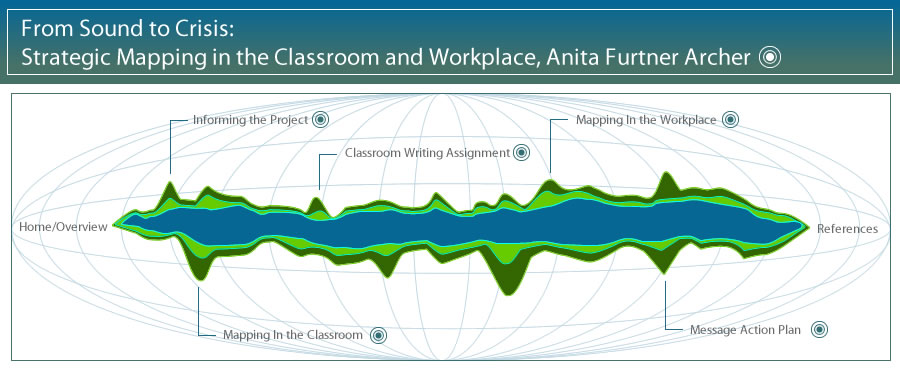| |

|
Overview and Purpose:
Music is present almost anywhere we go from gas stations to elevators to grocery stores. Mapping the listening spaces and the genres of this ever-present music can lead to an interesting understanding of the ways in which music impacts and reflects our culture: what its intent is and how listeners are or are not affected. This project asks students to map music based on several spatial options and to perform a rhetorical analysis on their own map's implications of society. (The references list of this webtext contains instructor- and student-friendly readings that might help prep for this assignment.)
Assignment:
Where do you hear music and what does it say about our culture? Create a map of music genres and spatial listening habits. You may even want to team up with other students to create a map that visually depicts differences in listening habits (space) and playlists. Some considerations to help you create the map:
- Music as mobile (car stereo, portable CD player/Walkman, MP3 player)
- Music as shared vs. private: listening spaces (car, bedroom, headphones, mall, gym, live venues/concerts, Web [Facebook/Myspace playlists], television/movies [news broadcasts, sitcoms, commercials], other cars in traffic)
- Music as live vs. recorded
- Music as lyrical vs. instrumental
- Music as accessible (marketing, copyright, licensing, downloadable [iTunes, Limewire])
Based on your map, compose a written rhetorical analysis of what your map says about spatial listening habits, what the implications are for society, and how your map successfully displays and argues listening habits and related spaces.
Some examples of maps that can be created are listed below, but your creativity is strongly encouraged:
- Map of listening observed during one day (the different places/spaces)
- Map of personal listening habits during one day (wake to a clock alarm, television playing in the background, places visited [gas station, convenience store], on campus [bell chimes count!], etc.)
Possible In-class Brainstorm:
Practice mapping information using different visual displays for your data. Some examples of data to map could be time spent doing homework, time spent commuting to and from class, time spent with family vs. friends, and so on. |
|

